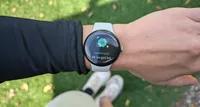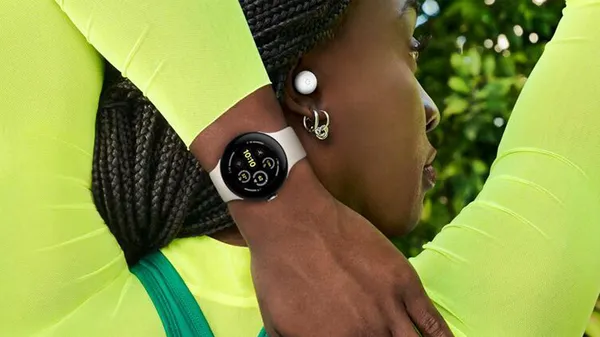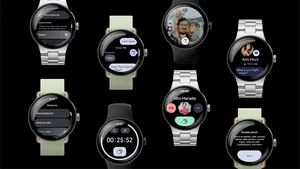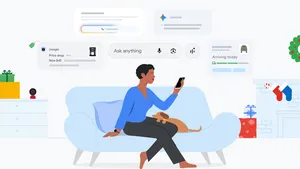How Pixel Watch 3 is helping me train for a marathon and 50k

In less than a month, I’m running my third marathon — and two weeks after that, my first-ever 50k. I’m definitely pushing myself more than I ever have, but luckily for me I have more data about my fitness level and my recovery than ever. I’ve been training with the Pixel Watch 3 and Fitbit Premium over the last few weeks, and here are five things I learned that will (hopefully) help me run my personal best next month!
1. I found a new sleep — and social — schedule
The most revealing stat that aided my training was my Sleep Score. It’s one thing to feel tired and another thing to see an actual score and other data that shows you your body needs to rest. By wearing my Pixel Watch 3 to sleep, I used Fitbit Premium to see sleep trends so I could adjust both my training schedule and my habits. I like scheduling my long runs on the weekends — but I also like seeing my friends on the weekends. I noticed that on nights I had social plans, I typically slept worse, so a Friday night get-together followed by a Saturday morning run was tough. This might sound overly obvious, but I figured if I logged enough hours of sleep, I’d be OK; that simply isn’t the case for me. What I eat and drink and how much energy I expend also affects my sleep. Seeing my score as well as stats like my awake time changed my thinking. So I’ve been making sure that I plan to see friends the night following my big weekend run, or even the next day.
I also learned from my sleep stats that I tend to fall asleep fast and then wake up an hour or two later. So if I know I want to get in a challenging workout the next day, I should go to bed an hour earlier so that obnoxious middle of the night wake-up isn’t as detrimental to my readiness the next day. And this has paid off: The days I go to bed earlier consistently correlate with higher Readiness scores, helping me prepare to work out instead of recover.
2. I gained confidence in knowing when to push my pace
One of the trickiest things about marathon training is knowing when to push it to increase your fitness and when to pull back so you don’t get hurt. When I started training, I was pretty tired after a 10-mile run, but that’s feeling easier these days. Still, I tend to hold back on my speed during long runs because I’m worried I’ll burn out too fast — even though I know my fitness level is increasing. Cardio load and Target load have been extremely helpful: In addition to my Readiness score — which is also a useful insight — these two metrics take things even further. Cardio load helps me understand my workout intensity as well as how hard my heart is working throughout the day, and Target Load is a recommendation of how much activity I’m ready for based on my recent Cardio load numbers and Readiness.
Plus, Readiness was recently recalibrated so that it doesn’t factor in recent activity, looking at heart rate variability, sleep and resting heart rate instead. So just because I'm training for a marathon and recording more activity than usual, the app won't automatically show me a low Readiness score: It will take these other factors into account and see that my fitness level is increasing and I can handle more. I can use these three scores to get an idea of how much cardiovascular energy I have and how ready I am to push my speed. A high Target load number gives me some added confidence to tackle sprints or try to run my mile splits faster!

3. I have a better idea of how hard my heart is working
I’ve been using the Pixel Watch 3 to pay attention to my heart rate — the latest Pixel Watch features our most accurate heart rate for running yet 1 . I have a lower heart rate; partially from running but also genetics. And it’s not just my resting heart rate; while I’m working out it stays relatively low compared to most people in my demographic. And I’ll admit, sometimes when I know I’m working as hard as possible, it’s just frustrating not to get into the highest zone. But I’ve found a way around this with my Pixel Watch 3 and Fitbit app.
As part of my training, I’ve been running sprint intervals, the purpose of which is to spike your heart rate. With the Fitbit app, I adjusted the target heart rate zones based on my personal preferences. And I’m not just picking random numbers: The app offers information on how you can best quantify your personal heart rate zones. Now that mine are adjusted, I have a better idea of how hard my heart is working — instead of just hanging out in “vigorous” the whole time, I can see when I hit “peak” while running intervals.
4. I learned about heart rate variability
Until I tried Pixel Watch 3, I never paid attention to my heart rate variability (HRV). HRV is the variation in the time between heartbeats and it can range widely from person to person. Since it’s a stat I didn’t know much about, I spent some time diving into my HRV metrics. I learned that while I’ve been maintaining what looks to be an average HRV for my body, it tends toward the lower end for someone of my age and fitness level — potentially indicating my autonomic nervous system is stressed. This is a really helpful insight to my training — my body is possibly feeling the effects of the added mileage and hours of working out; I likely could use more recovery, better sleep and increased hydration (time to go pick up some more electrolyte tablets!).
I know my Pixel Watch 3 and the Fitbit app aren’t diagnostic tools, but they’re helpful for getting deeper insights about my body. So it was useful to learn about HRV, and it’s something I plan to ask my doctor more about — and I never would have thought to without seeing these metrics.
5. I focused on my form
I only have a couple more weeks of dedicated training, so it’s important I do more than just log miles — I want to specifically focus on running faster. Pixel Watch 3 and the Fitbit app feature a running analysis tool that helps me do exactly this: I can look at charts showing how different things, like stride length and cadence, affect my pace. I can even dive into specific runs and compare these stats against each other or notice how they changed over the course of a run. I noticed I could pay more attention to my vertical oscillation (or bounce) and ground contact time (how long my foot is on the ground per step), both of which would help me improve my time. Fitbit Premium also has AI-powered workout recommendations based on your goals, performance and recovery metrics. There are even stretching and mobility recommendations, both of which I plan on using quite a bit as race day approaches. So I'll be working on those things for the next few weeks — that and a really motivating playlist!






